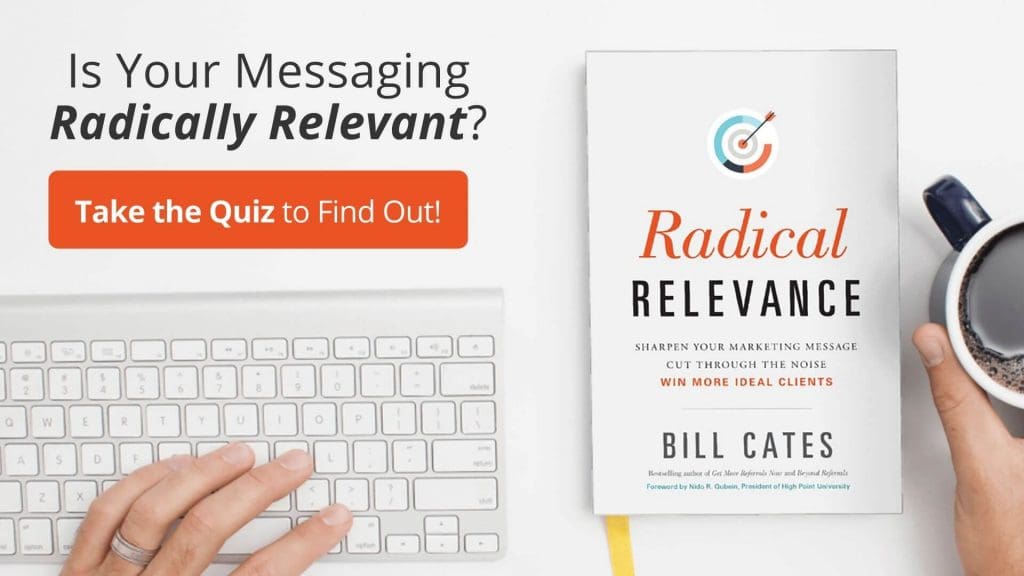How to Attract Clients with Brain-Friendly Messaging

When writing my new book, Radical Relevance, I reviewed a number of neuroscience studies to gain some insight into how we can use what is know about the brain in our efforts to attract more Right-Fit Clients™ and move them to take action. In this and subsequent articles, I’ll show you what I learned (and use) in my own business so that you can use it, too.
Start with Familiar Messaging
For the past 25 years, I’ve been instinctively coaching clients to position their messaging to address concepts that are already present in their prospects’ brains. I’ve explained that if you introduce an unfamiliar concept too quickly, you run the risk of lacking relevance, because you’re asking their brain to work too hard.
You see, one of the brain’s jobs is to conserve energy for the organism. Confusing messages require the brain to expend energy. The brain doesn’t like that. So it will ignore confusing messages.
I’m now proud to proclaim that brain science supports what I’ve been saying all along. (Don’t you love it when you’re right about something?)
It goes something like this: The brains of your targets prefer familiar concepts because it takes less processing energy to grasp those concepts. Carmen Simon, author of the book Impossible to Ignore, points out that, “Familiar things allow the brain to let its guard down and derive pleasure from accurate predictions. Find out what your listeners (prospects and clients) are familiar with and feed them that content first to get more of their attention.”
Then, you can bring in a more novel, counter intuitive, or surprising concept to peak their attention.
Then, Break the Pattern
Interrupting the familiar can be accomplished in a number of ways. You can use a contrarian or controversial headline or a made-up word. When doing the latter, be careful. If you haven’t established some context first (familiarity), the new word may require too much brain-processing power. That’s when you risk losing your audience. Chapter 15 will cover this concept of interrupting the familiar in more detail.
Would you like to learn more about how to break the pattern so you grab their attention? Get Radical Relevance and turn to Chapter 15.






